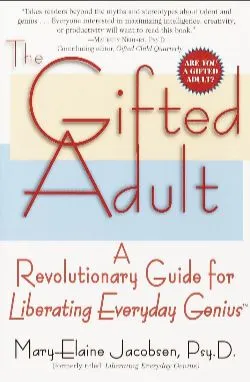
The overwhelming bulk of the literature on giftedness is general about gifted children: raising gifted children, aiding gifted children, being a gifted child, and so on. What sets Jacobsen’s book apart is that it emphasizes what happens to gifted children when they become gifted adults. If other former gifted children read this, I hope that they’ll recognize the crashing and burning that I feel like I’ve been dealing with in adulthood.
For Jacobsen, giftedness really comes down to three overarching traits: intensity, complexity, and drive. What sets the “gifted” apart is not having these traits–everyone has them, to some extent or another–but the degree to which they are exhibited. She also rightfully pushes back against the idea that IQ is a measure of a giftedness. IQ is, and can be, a component, but it’s far from the whole story. For what it’s worth, I do think that IQ is a useful measure of ability to abstract, but not much else.
In addition, Jacobsen relies on the theory of multiple intelligences: spatial intelligence, kinetic intelligence, verbal intelligence, auditory intelligence, and so on. She urges that those who are gifted tend to do well in a range of these intelligences, and it’s important to recognize them in determining giftedness.
However, she lost me in her discussion of evolutionary intelligence. Basically, this is a quotient that combines multiple intelligences with the three gifted traits (intensity, complexity, and drive), as well as “advanced development.” This is an interesting thought, but it reads more as pastiche: the author pastes these things together in order to look like some numerical signifier, but it didn’t seem to me to actually mean anything.
The remainder of the book deals with gifted characters and how they get constrained or over-expanded in environments where people don’t recognize this sort of neurodivergence (I’m not entirely sure that it qualifies as neurodivergence but, to her credit, Jacobsen doesn’t use this term–it’s my own). This is interesting, and it has practical suggestions, but these sections seemed to have more in common with other self-help books than something really new. Of course it’s important to be a team player! Of course these qualities have benefits! But I think many readers of the book will have already known these things.
Knowing these things are interesting, but it still doesn’t actually help many, many situations. Sometimes, the only way out is to find a new environment, and that’s a shame. I think this is the same issue that plagues many self-help books: we read, we learn, we practice what we learn, we build new habits and reinforce what we learn, and then what? They can help to see an old issue differently, but not much more.